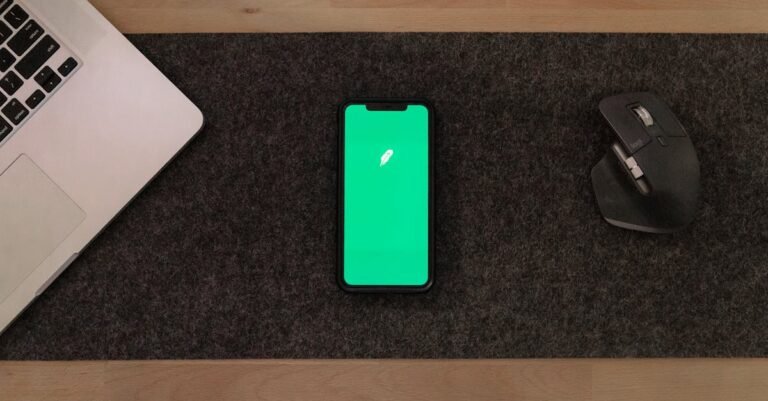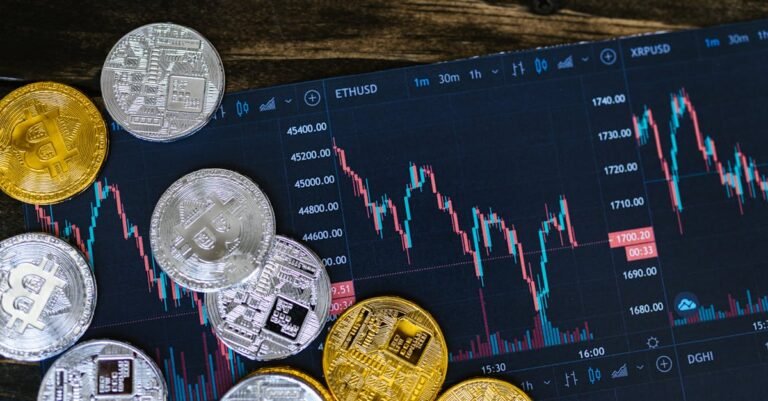The Graph (GRT): Unlocking the Power of Blockchain Data Like Never Before
Hey everyone! Ever felt like the world of blockchain and Web3 is this amazing, futuristic city, but finding your way around is… well, tricky? Especially when you need specific information? You know it’s there, somewhere on the blockchain, but getting to it feels like searching for a needle in a haystack. It’s a common feeling! Blockchains store incredible amounts of data, but accessing it efficiently? That’s been a huge hurdle. This is where something really exciting comes in, something called The Graph (GRT). Think of it as a super helpful guide, maybe even a search engine, specifically designed for this new decentralized world. Today, I want to chat about why accessing blockchain data is tough and how The Graph is stepping up to solve this, potentially changing the game for developers and users alike. Stick around, because this technology is fundamental to making Web3 truly usable and powerful.
The Maze of Blockchain Data: Why Finding Information is So Hard
Okay, let’s dive into why getting data from blockchains like Ethereum can be such a headache. Imagine a blockchain as a massive, shared digital book. Every transaction, every interaction with a smart contract, gets written down as a new page (or block) added to the end of the book. This book is copied and held by thousands of computers worldwide, making it super secure and transparent. Nobody can secretly change past pages – that’s the magic of immutability!
Sounds great, right? And it is! But here’s the catch: this book isn’t organized like your local library with neat sections and a searchable catalog. It’s more like a giant, continuous diary written in a special code. If you want to find, say, all the transactions related to a specific decentralized finance (DeFi) application from last Tuesday, you can’t just flip to a “DeFi Tuesday” section. You might have to read through potentially *thousands* of pages, decoding the information as you go. This is what decentralized applications (dApps) have traditionally faced.
The Traditional Struggle for dApps
Think about building an app today, maybe a social media feed or an online store. You rely on databases that are structured and optimized for quick searching. You ask for specific data – “show me posts from this user” or “find products under $50” – and you get it back almost instantly. This smooth data flow is crucial for a good user experience.
Now, imagine building a dApp on Ethereum. Let’s say you’re creating a marketplace for digital art (NFTs). You want your app to display:
- All the NFTs owned by a specific user.
- The transaction history of a particular NFT.
- NFTs within a certain price range.
- Artworks created by a specific artist.
To get this information directly from the Ethereum blockchain, your dApp would have to:
- Scan the blockchain block by block: Starting from the very first block (the genesis block) or at least from the block where the NFT contract was deployed.
- Filter through countless transactions: Looking specifically for events emitted by the NFT smart contract you care about (like ‘Transfer’ events).
- Decode the data: Understand the information contained within those events.
- Store and aggregate the data: Keep track of ownership changes, metadata links, prices, etc., often in your own centralized database off chain.
- Constantly update: Keep scanning new blocks to stay current.
This process is incredibly slow, expensive (in terms of computing resources), and complex to build and maintain. It’s like asking your computer to read the entire internet every time you search for something, instead of using Google. It just doesn’t scale well. Developers would spend huge amounts of time and resources building these custom indexing solutions for their dApps, often leading to centralized points of failure – exactly what Web3 aims to avoid!
Why Not Just Ask the Nodes?
You might wonder, “Can’t dApps just ask the computers running the blockchain (the nodes) directly for the data?” Yes, they can, using something called JSON RPC API calls. Nodes *do* let you ask for things like the balance of an account or the details of a specific transaction if you know its ID. But they are not designed for complex queries like “Show me all holders of this token who also interacted with that DeFi protocol.” Asking a node for such complex, aggregated information is usually impossible or extremely inefficient. Nodes are optimized for processing new transactions and maintaining the overall state of the blockchain, not for serving complex historical data queries.
This limitation creates a significant bottleneck for Web3 innovation. If developers can’t easily access and present blockchain data, building sophisticated and user friendly dApps becomes a monumental task. Imagine trying to build Facebook if you had to manually sift through server logs to figure out who someone’s friends were! It wouldn’t work. We needed a better way, a decentralized way, to organize and query this wealth of blockchain data. We needed an efficient blockchain information retrieval system tailored for the needs of decentralized applications (dApps). The complexity of dealing directly with smart contracts and raw blockchain events highlighted the urgent need for a robust data indexing layer. Without it, the user experience on dApps would remain clunky, slow, and limited, hindering the growth of the entire Web3 ecosystem, especially on busy networks like Ethereum.
Think about the sheer volume of data. Ethereum processes hundreds of thousands, sometimes millions, of transactions daily. Each transaction can involve multiple smart contract interactions, generating various events. Manually processing this firehose of information for every single dApp is simply unsustainable. Furthermore, different dApps need different slices of data, organized in specific ways. A DeFi lending platform needs detailed loan positions and collateral ratios, while an NFT marketplace needs ownership history and metadata, and a decentralized autonomous organization (DAO) might need voting records and proposal statuses. Each requires a tailored view of the underlying blockchain data. Building individual, centralized indexers for each dApp repeats the same work, wastes resources, and introduces central points of failure and control, undermining the core principles of decentralization. This clearly wasn’t the path forward for a truly open and resilient Web3.
Meet The Graph (GRT): Your Friendly Guide to Blockchain Data
So, we’ve established that getting specific, organized data out of blockchains is a real challenge. It’s like having a giant library with no card catalog. This is where The Graph (GRT) steps in, and honestly, it’s a game changer. Often called the “Google for Blockchains,” The Graph is a decentralized protocol designed specifically for data indexing and querying information from blockchains, starting with Ethereum and now expanding to many others.
Instead of every single dApp developer having to build their own clunky, centralized system to sift through blockchain history, The Graph provides a shared, open infrastructure to do this heavy lifting. It allows developers to define *what* data they need and *how* it should be structured, and then The Graph network takes care of fetching, processing, and storing it in a way that makes it super easy and fast to query.
Subgraphs: The Secret Sauce
The core concept behind The Graph is something called a “Subgraph.” Think of a subgraph as a custom made index or API specifically tailored for a particular set of smart contracts or a dApp. It’s like creating a highly specific index card system for just the section of the library you care about.
Here’s how it generally works:
- Define the Data (Subgraph Manifest): A developer decides exactly what data their dApp needs. This involves pointing to the relevant smart contracts on the blockchain, specifying which events or function calls to pay attention to (e.g., ‘TokenMinted’ events, ‘UserDeposited’ function calls), and defining the structure (schema) of the data they want to store. This definition is called the subgraph manifest.
- Process the Data (Mapping): The developer also writes code (in AssemblyScript, similar to TypeScript) called mappings. These mappings tell the system how to transform the raw blockchain data from the specified events or calls into the structured entities defined in the schema. For example, when a ‘Transfer’ event occurs, the mapping might update the token balances for the sender and receiver entities.
- Deploy the Subgraph: The developer deploys this subgraph definition to The Graph Network.
- Indexing Begins: Special participants in The Graph network, called Indexers, pick up this subgraph definition. They run software (Graph Node) that scans the blockchain history, processes the relevant data using the provided mappings, and stores it efficiently.
- Querying Made Easy: Once the subgraph is indexed (meaning the historical data is processed and stored), the dApp can easily query this organized data using a standard API language called GraphQL. Queries are fast and efficient because they hit the indexed data stored by the Indexers, not the raw blockchain itself.
This process turns messy, hard to access blockchain data into structured, easily searchable information via custom APIs. It’s a powerful abstraction layer that dramatically simplifies dApp development. Developers can now focus on building great user experiences instead of wrestling with complex backend data infrastructure. The Graph essentially creates a vibrant API economy for Web3.
The Ecosystem: Who Makes The Graph Work?
The Graph isn’t just software; it’s a decentralized network powered by several key participants who are incentivized by the network’s native token, GRT. Let’s meet the players:
- Indexers: These are the node operators of The Graph network. They stake GRT tokens to participate. Their job is to run the necessary hardware and software (Graph Node) to index subgraphs and process queries from users (Consumers). They earn Query Fees paid by consumers and indexing rewards from the protocol for their work. Providing reliable and fast service is key for them to earn rewards.
- Curators: These participants are subgraph developers, data consumers, or community members who signal (using GRT) which subgraphs they think are valuable and high quality and should be indexed by the Indexers. They deposit GRT into a bonding curve associated with a specific subgraph. Curators earn a portion of the query fees generated by the subgraphs they signal on, incentivizing them to identify useful and accurate subgraphs early. Good curation helps Indexers prioritize which subgraphs to focus on.
- Delegators: These are individuals who want to contribute to securing the network but don’t want to run a Graph Node themselves. They delegate their GRT tokens to existing Indexers they trust. In return for helping secure the network and boosting the Indexer’s stake, Delegators earn a portion of the query fees and indexing rewards earned by that Indexer, without needing technical expertise.
- Consumers: These are the end users of The Graph, typically dApps or developers who need to query blockchain data. They pay small Query Fees (usually in GRT) to the Indexers, Curators, and Delegators for the specific data they request via the indexed subgraphs. This creates a pay per use model for accessing valuable blockchain information.
The GRT token is the lifeblood of this ecosystem. It’s used for staking by Indexers, signaling by Curators, delegating by Delegators, and paying for queries by Consumers. This tokenomic design aligns incentives, ensuring that network participants work together to provide reliable and efficient decentralized indexing services. It secures the network and coordinates the provision of data in a decentralized way.
The beauty of this system lies in its decentralization. Unlike relying on a single company’s centralized server to provide data, The Graph network consists of numerous independent Indexers competing to provide the best service. This leads to greater reliability, censorship resistance, and aligns perfectly with the core ethos of Web3. It’s building a crucial piece of decentralized infrastructure, a foundational Web3 data layer needed for the ecosystem to mature and scale. The efficiency gained means developers can build more complex and responsive decentralized applications (dApps) faster than ever before.
GRT’s Big Impact: Fueling the Decentralized Future
So, we’ve seen the problem of messy blockchain data and how The Graph (GRT) tackles it with its clever system of subgraphs and network participants. But what does this actually *mean* for the bigger picture? What is the real, tangible potential of The Graph and its GRT token? Let’s zoom out and explore the profound impact this technology is having and will continue to have on the Web3 landscape.
Accelerating dApp Development and Innovation
Perhaps the most immediate impact is on developers building decentralized applications (dApps). Before The Graph, as we discussed, setting up the data infrastructure was a major pain point, consuming significant time and resources. Developers were essentially reinventing the wheel every time they needed to access anything beyond basic on chain data.
With The Graph, this changes dramatically:
- Faster Development Cycles: Developers can leverage existing subgraphs or quickly create new ones, drastically reducing the time spent on backend data plumbing. They can query complex data sets with simple GraphQL calls, allowing them to focus on the unique features and user experience of their dApp.
- Richer User Experiences: Easy access to organized data enables dApps to offer much richer and more responsive user interfaces. Think real time portfolio tracking in DeFi, detailed activity feeds in social dApps, complex filtering and sorting in NFT marketplaces – all powered by efficiently queried data from subgraphs.
- Lower Barrier to Entry: By handling the indexing complexity, The Graph makes it easier for new developers and smaller teams to enter the Web3 space and build innovative applications without needing deep expertise in blockchain node operations or data engineering.
We’re already seeing this play out. Thousands of subgraphs have been deployed, powering a huge range of popular dApps across DeFi (like Uniswap, Aave, Curve), NFT platforms (like Decentraland, Foundation), DAOs, and more. These applications rely on The Graph for the smooth data flow their users expect. It’s become a fundamental piece of the blockchain infrastructure for many projects.
Enabling an Open Data Economy
The Graph isn’t just a tool; it’s fostering an entirely new way to think about data – an open data economy. Traditionally, valuable data is often locked away in proprietary databases owned by large corporations. The Graph turns this model on its head for public blockchains.
Blockchains are inherently public ledgers. The Graph makes the data within these ledgers universally accessible and usable through open APIs (subgraphs). Anyone can deploy a subgraph, anyone can query an existing subgraph (paying the necessary query fees), and anyone can participate in the network that makes this data available (as an Indexer, Curator, or Delegator).
- Data Composability: Because subgraphs are open, developers can potentially combine data from multiple subgraphs to create entirely new applications and insights. Imagine pulling data from a DeFi protocol’s subgraph and combining it with data from an NFT marketplace’s subgraph to analyze correlations or build novel financial products.
- Transparency and Verification: Since the source data comes directly from the blockchain and the indexing process is defined openly in the subgraph manifest, there’s a high degree of transparency. Users can have greater confidence in the data presented by dApps using The Graph.
- Market Driven Data Provision: The economic incentives driven by the GRT token create a market where useful data is curated, indexed, and made available efficiently. Subgraphs that provide valuable data attract more queries, generating more fees and rewarding the participants who support them.
This vision of an open Web3 data layer is crucial for building a truly decentralized internet. It ensures that access to information isn’t controlled by a few central players but is instead a public utility, powered by a distributed network. This enhances data accessibility for everyone.
Beyond Ethereum: A Multi Blockchain Future
While The Graph started with Ethereum, its vision extends far beyond a single chain. The blockchain ecosystem is rapidly becoming multi chain, with numerous Layer 1s (like Solana, Near, Polkadot) and Layer 2 scaling solutions (like Polygon, Arbitrum, Optimism) gaining traction. Accessing data across these disparate networks presents an even greater challenge.
The Graph is actively working to support indexing across multiple blockchains. The hosted service already supports dozens of networks, and the decentralized mainnet is expanding its reach. This multi blockchain capability is vital. It means The Graph can serve as a unified indexing and querying layer for the entire Web3 ecosystem, regardless of where the data originates. This significantly aids blockchain scalability from a data access perspective and makes it easier to build cross chain applications.
Potential Challenges and the Road Ahead
Of course, the journey isn’t without its challenges. The Graph network needs to continue scaling to handle the ever increasing volume of blockchain data and query demand. Ensuring the economic incentives remain balanced and effectively secure the network is an ongoing process. Competition from other potential indexing solutions might also emerge.
However, The Graph has a significant head start, a strong community, a robust technical foundation, and a clear vision. The potential for The Graph (GRT) to become the default standard for querying blockchain data is immense. It’s solving a fundamental problem that unlocks vast potential for innovation across the entire decentralized future.
By making complex blockchain data readily available, The Graph is empowering builders, improving user experiences, and laying the groundwork for a more open, transparent, and interconnected Web3. The potential of Graph (GRT) for data indexing isn’t just theoretical; it’s actively shaping the development and usability of the decentralized web today. It’s moving us closer to a future where interacting with decentralized systems is as seamless as using the web applications we know today, but with the added benefits of transparency, user ownership, and decentralization.
Wrapping Up: Why The Graph Matters
So, what’s the big takeaway here? We started by looking at the surprisingly difficult task of getting useful information out of blockchains. It’s like having a treasure chest of data, but no easy key to unlock and organize it. This complexity was a major roadblock for building the kind of smooth, data rich decentralized applications needed for Web3 to truly take off.
Then came The Graph (GRT). It acts like a master librarian for blockchains, creating specialized indexes called subgraphs. These subgraphs allow developers to easily define, access, and query specific blockchain data without the nightmare of building their own indexing systems. This is all powered by a decentralized network of Indexers, Curators, and Delegators, coordinated and incentivized by the GRT token.
The impact is huge. The Graph dramatically speeds up dApp development, enables much better user experiences, and fosters an open data economy where blockchain information is readily accessible. It’s a critical piece of Web3 infrastructure, making the dream of a decentralized internet more practical and achievable. As The Graph expands to support more blockchains, its role as the go to solution for decentralized indexing only looks set to grow.
Get Involved!
Feeling curious about The Graph? That’s awesome! Whether you’re a developer, a crypto enthusiast, or just someone interested in the future of the internet, there are ways to learn more and even participate:
- Explore Subgraphs: Check out The Graph Explorer to see the thousands of subgraphs already deployed for popular dApps. You can play around with queries and see the data they provide.
- Learn More: Dive into The Graph’s official documentation to understand the technology in greater detail.
- Consider Participating: If you hold GRT, you could explore becoming a Delegator to help secure the network and earn rewards, or if you have technical skills, learn about running an Indexer or curating subgraphs.
The journey towards a fully decentralized web requires foundational tools like The Graph. By solving the critical challenge of data accessibility, The Graph (GRT) is paving the way for a new generation of powerful and user friendly decentralized applications. It’s an exciting space to watch and be a part of!









